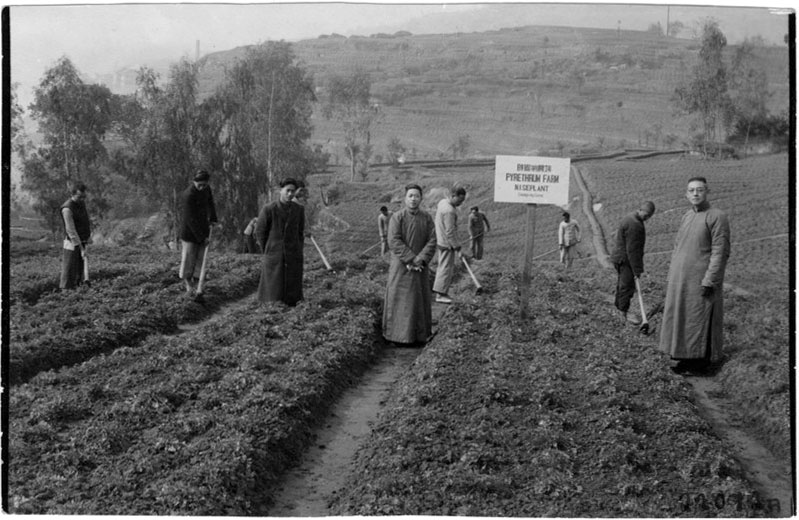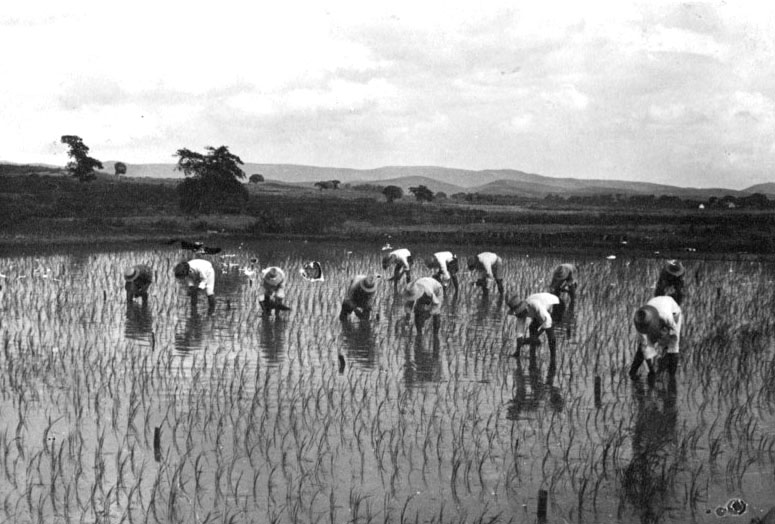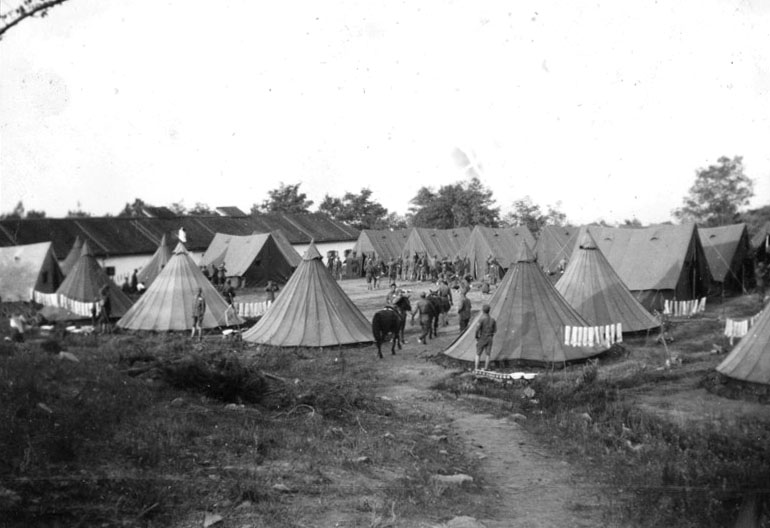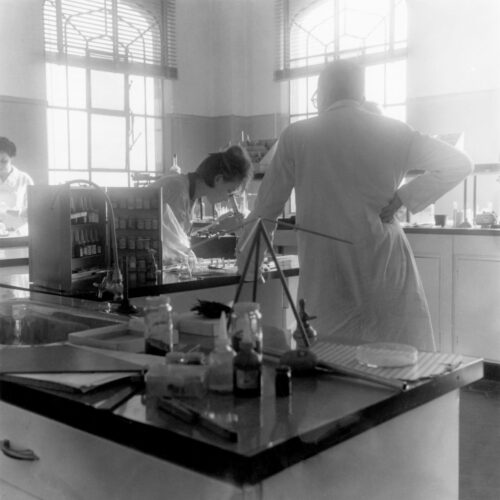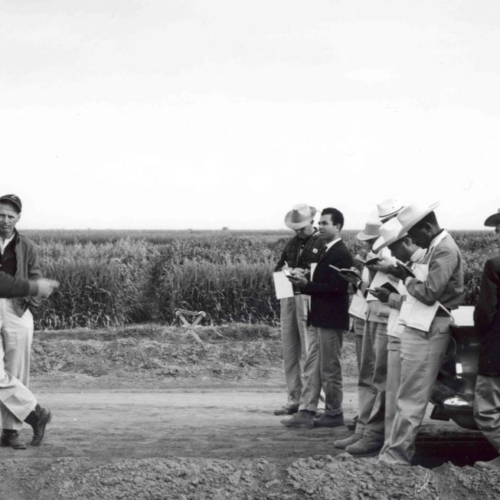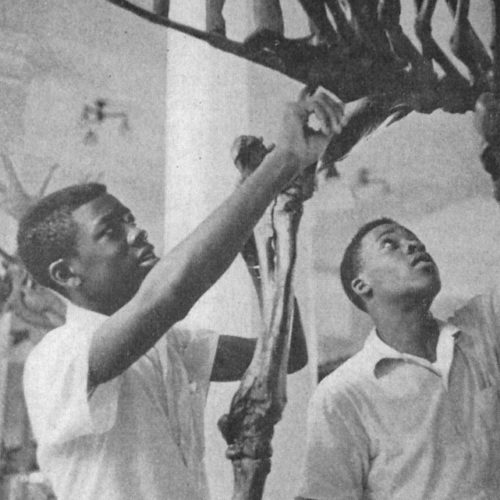The Rockefeller Foundation (RF) had a significant history in China by the time it undertook its China Program, a rural reconstruction initiative that ran from 1935 to 1946. It had launched the China Medical Board (CMB) in 1914 and established the Peking Union Medical College (PUMC) in 1917. It supported a handful of mission colleges through the late 1920s, a legacy of the Rockefeller family’s Baptist commitments. By 1933, the RF had spent over $37 million in China, more than in any other foreign country, and most of it had been spent on the PUMC.
Beyond Medicine and Public Health
The RF’s 1928 reorganization signaled its emergence as a mature philanthropic entity and marked a turning point in its relationship to China. The RF was now ready to branch out beyond medicine and public health. In 1928, it centralized its governance, adopted the guiding principle of “the advancement of knowledge,” and added divisions in the natural sciences, social sciences and humanities. In this new context, the CMB and PUMC seemed no longer to fully express the Foundation’s vision, and the CMB, which provided the support for the PUMC, was released to become an independent entity.
Against this backdrop of changing priorities, RF President Max Mason dispatched Vice President Selskar Gunn to China in 1931 for an exploratory assessment. After a second visit from 1932 to 1934, Gunn was concerned that the PUMC , while it provided a top-notch Western medical education, graduated relatively few doctors per year, and most of them went on to work in cities. Yet 85% of China’s massive population was rural and poor, and Gunn felt the Foundation could have a greater impact with a broader program.
Gunn enlisted help from International Health Division (IHD) staffer John B. Grant, who had become intrigued with Y.C. James Yen’s grassroots Mass Education Movement (MEM). Grant, the PUMC’s sole professor of Public Health, wanted to take clinics to the countryside and connect basic medical care to other rural concerns, including education, sanitation, and agriculture. Yen’s MEM provided a possible blueprint, since it was now working as a comprehensive community development program designed to help Chinese peasants help themselves not only through literacy programs (where MEM had begun its work), but also through modern agriculture, health clinics, and cooperative self-government.
Gunn’s 1934 proposal to the Trustees exhaustively surveyed the state of Chinese universities, medicine, primary and secondary schools, agriculture and engineering, and proposed a many-pronged plan that would contribute to China’s emergence as a modern state. Gunn, however, believed that the applied sciences of agriculture and engineering had to receive priority among these areas, even though the RF at the time had no formal programs devoted to them. In the end, Gunn’s emphasis on applied work actually soothed those Trustees who worried that the RF’s new commitment to the “advance of knowledge” “was too esoteric” and “unrelated to human aspiration or need.” In 1935 the Trustees approved the China program with a grant of $1 million for a three-year period.
“Plastic China”
The timing of the China program was not optimal. Chiang Kai-shek’s Nationalist government, which had triumphed in 1927, maintained shaky authority. The Communists were gaining power, although their ultimate victory was far from evident at this time. A feudal land-owning system dominated by warlords still prevailed. And the threat of Japanese invasion was constant. But the RF almost welcomed the challenge of bringing stability to the country. The Trustees speculated that
…in her evolution into a modern state, China is bound by few hampering traditions, and the plastic conditions of her life and institutions at the present moment is an inviting challenge to a positive kind of service.
Rockefeller Foundation Trustee Report, 1934Mr. Gunn’s Program for China, Excerpt from Report of Committee on Appraisal and Plan, December 21, 1934, China, Series 601, 1913-1960. Rockefeller Foundation Records, Projects (Grants), Record Group 1, Subgroup 1.1, Series 601, Rockefeller Archive Center.
Gunn believed the Foundation’s program would be less subject to disturbance because every faction valued the basic types of work he proposed. Furthermore, he argued,
I do not consider that we would show statesman-like qualities if we postpone the development of a new program and wait for a Utopian condition which none of us will live to see.
Selskar Gunn, 1934“China and the Rockefeller Foundation” by Selskar Gunn, January 23, 1934, “Program and Policy – Reports – Pro-25 – Pro-26,” 1933-1934. Rockefeller Foundation records, Administration, Program and Policy, Record Group 3, General Program an dPolicy, Series 900, Rockefeller Archive Center.
Rural Reconstruction in China
The first priority the RF set was building an effective agricultural economy. The RF believed its most useful role would be “stimulating Chinese leadership” to define the fundamentals. Between 1935 and 1937, it helped establish the North China Council for Rural Reconstruction (NCCRR), essentially appending five leading university departments to the kinds of fieldwork undertaken by the MEM. Agricultural demonstration sites were set up with links to university research programs and regular meetings among the participating groups began.
The comprehensive vision was a stimulating one, but it was also an anomaly for the RF, since it was outside the jurisdiction of any single division at the Foundation. Gunn’s vision, however, encountered practical problems from the outset. Tensions between academic researchers and practitioners were constant and never resolved; misunderstandings among the participating groups, which had never before worked together, quickly grew to major proportions. Moreover, it was difficult for any reconstruction program to succeed in rural China without tackling the central issue of land reform, which no American foundation could do.
A Sudden End to the Rockefeller Foundation’s Rural Reconstruction Program
After a rocky start, communication among the participating groups began to improve in the second year of the program, but any real progress was cut short by the 1937 Japanese invasion, which forced the participating organizations to shut down or to relocate to Southwest China. Support continued in a reduced way for some aspects of the program in Southwest China through 1946, but the cooperative heart of the program ended with the invasion.
Despite its lack of overt success, the Rural Reconstruction program and the lessons learned from it are largely credited with providing a model for the subsequent community development initiatives of the RF and other international aid organizations, as well as a prototype of Point IV, the US technical assistance program that eventually became the Agency for International Development (USAID).
Research This Topic in the Archives
Explore this topic by viewing records, many of which are digitized, through our online archival discovery system.
- “Chinese Mass Education Movement,” 1927-1961. Office of the Messrs. Rockefeller records, Education Interests, Series G, Rockefeller Archive Center.
- “Chinese Mass Education Movement – Contributions” 1948-1961. Office of the Messrs. Rockefeller records, Education Interests, Series G, Rockefeller Archive Center.
- “Program and Policy – Reports – Pro-25 – Pro-26,” 1933-1934. Rockefeller Foundation records, Administration, Program and Policy, Record Group 3, Subgroup 3.1, General Program and Policy, Series 900, Rockefeller Archive Center.
- “Rural Reconstruction,” 1934-1940. Rockefeller Foundation Records, Projects (Grants), Record Group 1, Subgroup 1.1, China, Series 601, General (No Program), Subseries 601.GEN, Rockefeller Archive Center.
- “China,” 1913-1960. Rockefeller Foundation Records, Projects (Grants), Record Group 1, Subgroup 1.1, Series 601, Rockefeller Archive Center.
- “South Asia Region” 1915-1970. Rockefeller Foundation Records, Projects (Grants), Record Group 1, Subgroup 1.2, Series 460, Rockefeller Archive Center.
- “National Agricultural Research Bureau – 1,” circa 1905-1980. Rockefeller Foundation records, Photographs, China (including Manchuria, Mongolia, Tibet), Series 601, Rockefeller Archive Center.
- “National Bureau of Industrial Research – Forest Products Laboratory,” circa 1905-1980. Rockefeller Foundation records, Photographs, China (including Manchuria, Mongolia, Tibet), Series 601, Rockefeller Archive Center.
The Rockefeller Archive Center originally published this content in 2013 as part of an online exhibit called 100 Years: The Rockefeller Foundation (later retitled The Rockefeller Foundation. A Digital History). It was migrated to its current home on RE:source in 2022.
